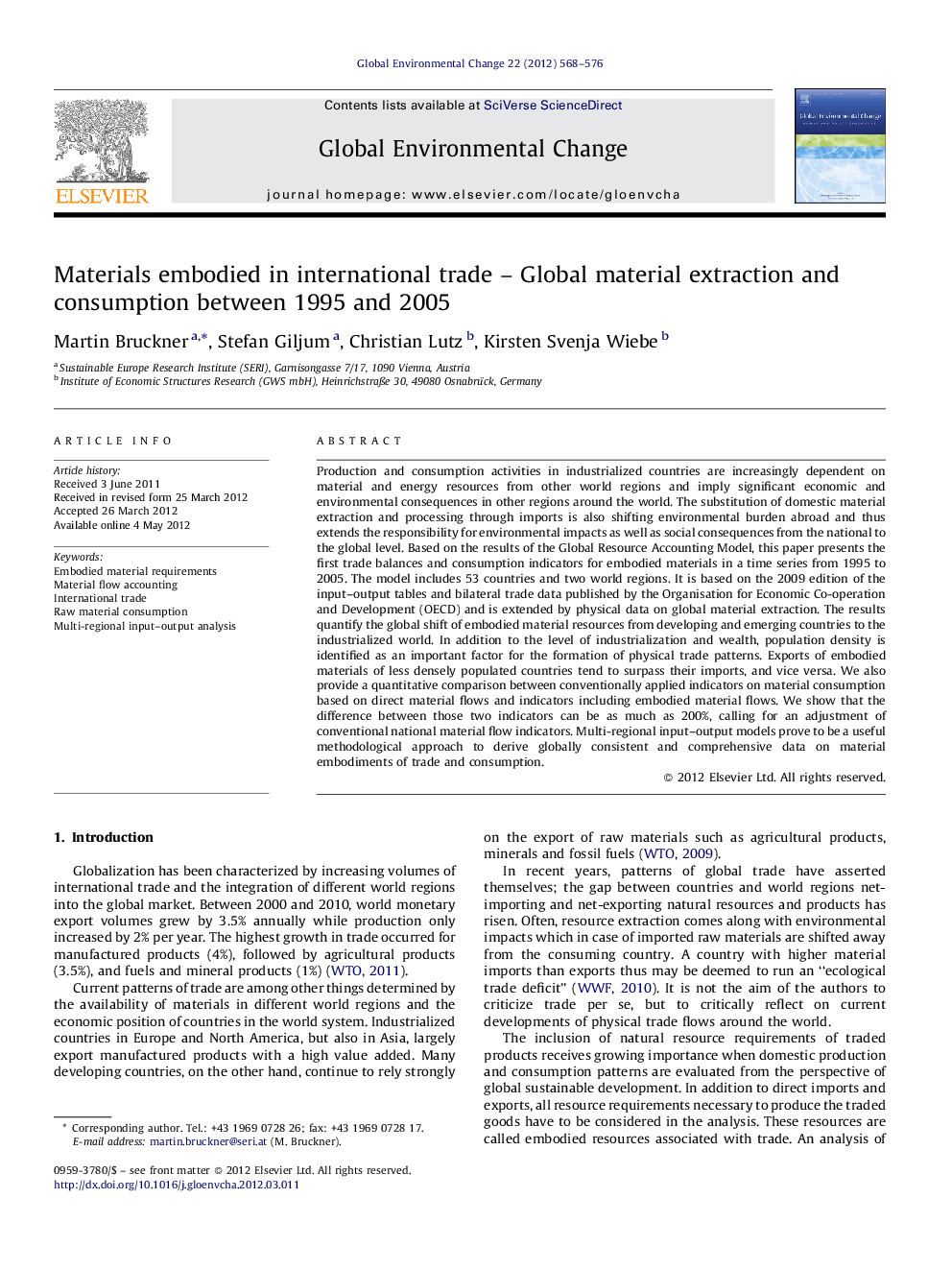| کد مقاله | کد نشریه | سال انتشار | مقاله انگلیسی | نسخه تمام متن |
|---|---|---|---|---|
| 1054760 | 946856 | 2012 | 9 صفحه PDF | دانلود رایگان |

Production and consumption activities in industrialized countries are increasingly dependent on material and energy resources from other world regions and imply significant economic and environmental consequences in other regions around the world. The substitution of domestic material extraction and processing through imports is also shifting environmental burden abroad and thus extends the responsibility for environmental impacts as well as social consequences from the national to the global level. Based on the results of the Global Resource Accounting Model, this paper presents the first trade balances and consumption indicators for embodied materials in a time series from 1995 to 2005. The model includes 53 countries and two world regions. It is based on the 2009 edition of the input–output tables and bilateral trade data published by the Organisation for Economic Co-operation and Development (OECD) and is extended by physical data on global material extraction. The results quantify the global shift of embodied material resources from developing and emerging countries to the industrialized world. In addition to the level of industrialization and wealth, population density is identified as an important factor for the formation of physical trade patterns. Exports of embodied materials of less densely populated countries tend to surpass their imports, and vice versa. We also provide a quantitative comparison between conventionally applied indicators on material consumption based on direct material flows and indicators including embodied material flows. We show that the difference between those two indicators can be as much as 200%, calling for an adjustment of conventional national material flow indicators. Multi-regional input–output models prove to be a useful methodological approach to derive globally consistent and comprehensive data on material embodiments of trade and consumption.
► We calculate direct and indirect materials embodied in trade in 1995 and 2005.
► Net shifts from non-industrialized to industrialized countries nearly doubled.
► Currently applied indicators underestimate national material consumption by up to 200%.
Journal: Global Environmental Change - Volume 22, Issue 3, August 2012, Pages 568–576